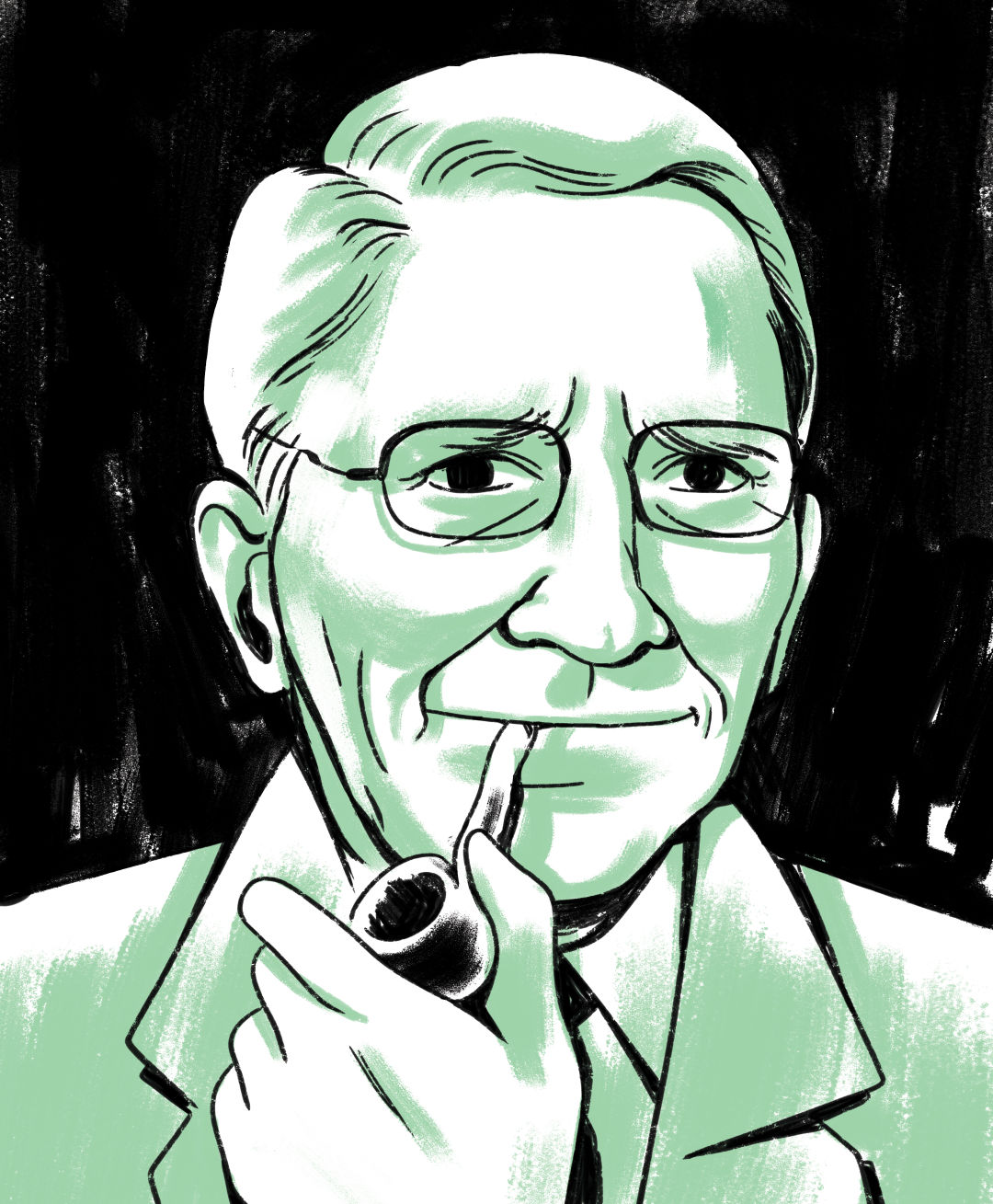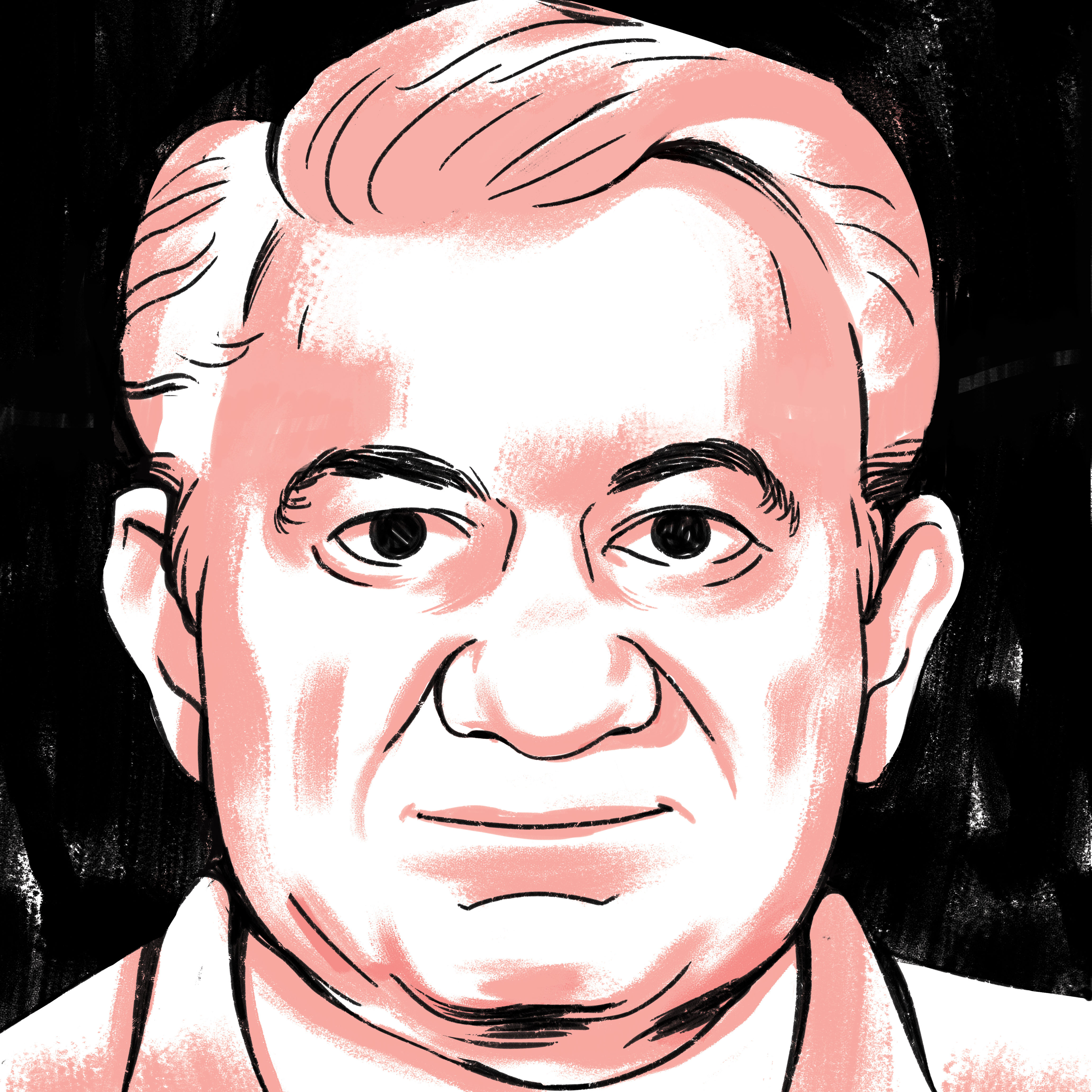The Life and Trials of Richard "Racehorse" Haynes

Image: Jackie Ferrentino
He wasn’t a tall man. At the time size seemed like it went part and parcel with being a Houston criminal defense attorney—this was the city that had produced the giant of the species, both literally and figuratively, with one of Richard “Racehorse” Haynes’s key mentors, Percy Foreman, a man who could sweet-talk a jury into doing and thinking anything he wanted. And if that didn’t work, the towering Foreman would dominate them.
At 5’7” Haynes didn’t have physicality on his side, but over his decades in law, he would become one of the most famous criminal defense attorneys in the country in part because of his sharp mind, quick wit, and willingness to do whatever it took—whether that meant using a cattle prod on himself to show a jury that although it “hurts like hell, it’s not deadly,” threatening to put a nail through his own palm to demonstrate that crucifixion wasn’t actually that painful, or cross-examining an empty chair when the prosecution refused to produce a witness—in defense of his client.
And Haynes, standing in court in his well-tailored pinstripe suits and ostrich-skin cowboy boots, was a master of cross defense—even when only given a vacant chair to work with—Houston defense attorney Dan Cogdell, a protégé of Haynes’s, recalls. “He was absolutely fearless,” Cogdell says. “The dude had no reverse transmission, and his tenacity was unparalleled. He just would not quit. I once saw him cross-examine a business record custodian, a process that usually takes about 10 minutes, and he took, well, hours.”
Haynes, born in Houston, got his nickname in junior high school over in Houston’s Sunset Heights either because he was the fastest runner in his class or because a football coach noticed that he seemed more interested in carrying the ball from sideline to sideline than in advancing it on the field. Either way, the moniker stuck. And he was certainly fast. Only 17 years old when he helped storm the beaches during the Battle of Iwo Jima, under enemy fire Haynes rescued two wounded and drowning fellow Marines, winning the Navy and Marine Corps Medal.
After the war he initially decided to become a doctor—and then decided against it after a week working in a hospital. He opted for the law, Haynes later explained, because it was a profession where, if you made a mistake, you could always appeal. So he attended the University of Houston’s Law School, got his bar card in 1956, and spent the following years watching Foreman, the master of the craft of defense law, work his magic. “If you can prove that the guy your client murdered was guilty of abusing a horse or a dog and you can prove that to the jury, the jury will acquit your client,” Foreman explained to the young Haynes.
Haynes took that lesson and ran with it. He became the go-to guy for misdemeanor crimes, reportedly winning 163 drunk driving cases in a row in 1968, one of the longest winning streaks in legal history. Part of what would make him such a remarkable figure in the courtroom later on was that he simply put in the time. “I’ve tried hundreds of cases,” Cogdell says. “Most lawyers today have. Richard tried thousands. He had raw talent—this quick mind, a way of connecting with people—but he also believed in putting in the seat time.”
It paid off by giving Haynes an understanding of people that helped the feisty, pipe-smoking, seemingly mild-mannered man behind the spectacles create his famed courtroom persona, the “Big Rich” Texas defense lawyer who would dazzle the jury by whatever means necessary to secure an acquittal for his client. “Say you sue me because you say my dog bit you,” Haynes was known to say when explaining his strategy. “Well, this is my defense: My dog doesn’t bite. And second, in the alternative, my dog was tied up that night. And third, I don’t believe you really got bit. And fourth, I don’t have a dog.”
He defended Dr. John Hill in 1971 when the River Oaks plastic surgeon was charged with murdering his heiress wife with a poisoned éclair. Haynes secured a mistrial, but Hill was killed by a hitman before the second trial could start. But Haynes’s reputation had been made. “If you were to go to Hollywood’s Central Casting in the 1970s, every criminal defense attorney would’ve looked just like Richard,” Christopher Tritico, another Houston lawyer and longtime friend of Haynes's, recalls. “And he was always a gentleman. That was what set him apart in the courtroom; Percy and Joe Jamail would lean on people, but Racehorse was always polite, even when he was pushing a witness.”
He was also effective, following up the Hill case with a string of seemingly unwinnable cases and emerging victorious from them all. He next made headlines in 1977 successfully defending Fort Worth oil man T. Cullen Davis when Davis was accused of murdering his wife’s boyfriend and his 12-year-old stepdaughter. The next year Haynes got Davis acquitted on charges of attempting to hire a hitman to kill his wife and the judge presiding over Davis’s divorce, this time despite the fact that there was video and audio evidence of Davis’s involvement.
In 1981 he took on another high-profile trial, the defense of Vicki Daniel, a former Dairy Queen waitress accused of murdering her husband, Price Daniel Jr., who was not only the descendant of a political dynasty in Texas that traced its roots directly back to Sam Houston, but also the former speaker of the Texas House of Representatives. This might have seemed like an open-and-shut case: Daniel had served her husband with divorce papers and a few days later they’d had a fight and she’d shot him, according to court records. But Haynes dug in, claiming that Price was a “drunken, dope-crazed, wife-beating bisexual and pederast, a man whose smiling public face concealed perverse desires” who had come after her when she shot him, and the jury agreed.
Then there was Morganna, an entertainer who became known as the “kissing bandit” because, starting in 1969, she would rush onto baseball fields and kiss unsuspecting players. Morganna finally got caught and charged when she went after Astros pitcher Nolan Ryan in a 1985 Houston game. Haynes told the papers he planned to use the “gravity” defense. He was simply going to have the buxom Morganna demonstrate for the jury seven to 10 times how, in his view, Morganna had simply leaned over the stadium railing and had been pulled down inexorably—and completely against her will—by her enormous breasts. The Houston Sports Authority dropped the charges.
Haynes, who was married to the same woman for more than 60 years and who died at age 90 in 2007, enjoyed his fame—at one point a statewide poll rated him as well known as the Dallas Cowboys famed coach—but he later lamented that the attention had ended up taking away the element of surprise he’d once been able to bring into a courtroom. But while the times changed—both Tritico and Cogdell agree most of his theatrical, audacious tactics just wouldn’t be as effective today—his legend hasn’t dimmed. Neither has his place in Houston legal history.
“Houston was a land of opportunity, and Houston made Racehorse who he was. And then we had sensational cases in Houston,” Cogdell says. “It was a confluence of circumstances that created him, and made him, and allowed him to be in the right place at the right time to become the legend we remember now. But Houston was key to all of that. Any other town, I don’t think Haynes would have been Haynes.”




